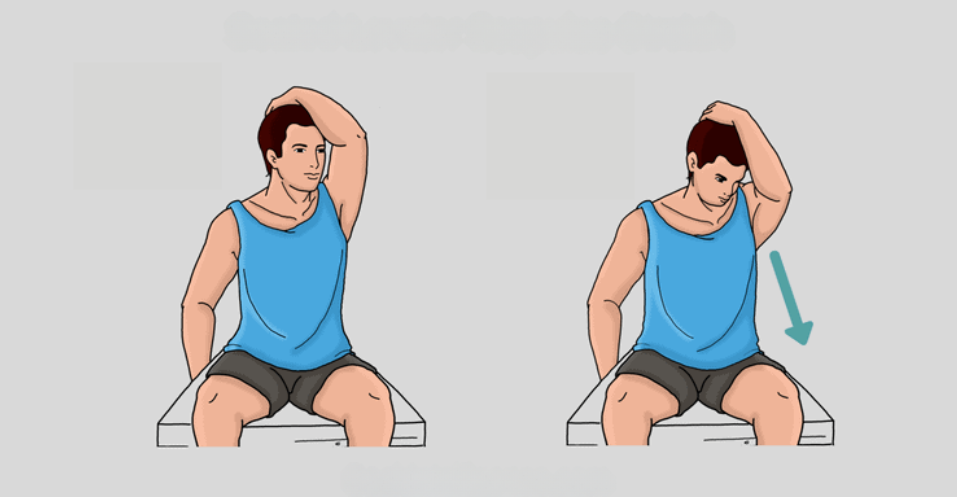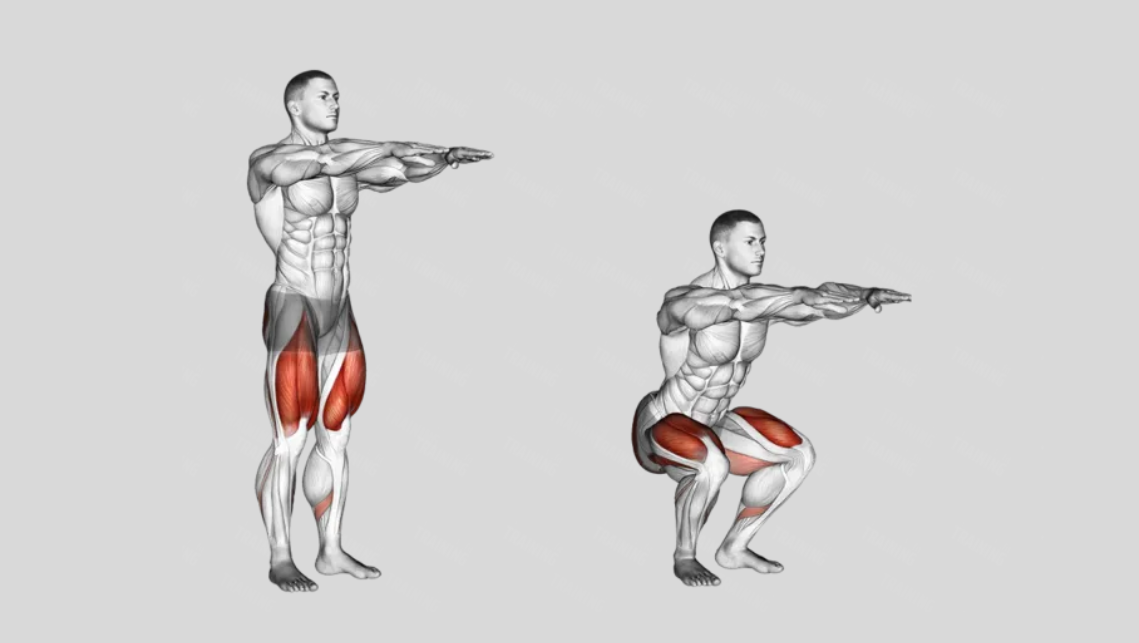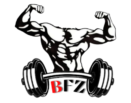Entering the gym for the first time feels like entering a new dimension. You are excited, nervous, and over-motivated at the same time. With all your curiosity, you feel like, “Ok, today I will use all the machines.” But if you do that, you will definitely injure yourself.
 A beginner doesn’t have enough strength, and their muscles and joints are also not flexible enough to handle any type of load. Today, in this article, we are going to learn how a beginner should start their journey so that they can be perfect from day one.
A beginner doesn’t have enough strength, and their muscles and joints are also not flexible enough to handle any type of load. Today, in this article, we are going to learn how a beginner should start their journey so that they can be perfect from day one.
Consult with a Trainer
Where you need to start depends on your current condition, and no one can assess your exact physical state except an expert. What your diet should be, how to design your journey to achieve your goal easily and safely without the risk of injury, what your workout plan should be, when your plan needs adjustments to keep your workout enjoyable, how to break through plateaus, how to push yourself to your limits—these are just some of the things a trainer can help you with throughout your entire journey.
Especially when you need all these services, a personal trainer becomes essential. However, if you don’t want to spend money in your initial days, no worries—I’m here to help you.
A Clear Concept
As today is your first day in the gym, your workout should not be longer than 45 minutes. I’m sure you’ve seen plenty of fancy workouts on social media. However, we will stick with the basics. Keep in mind that you must start with lightweight, even if you can lift heavy. This is important to reduce muscle soreness.
The workout plan I’m about to share with you is designed to improve your overall body composition and help your entire body adapt to these exercises gradually. You can follow this plan for the next three months, which will help strengthen your muscles and joints. This plan will not only make you physically stronger but also boost your mental resilience.
Ok, we will complete our first day’s workout in three sections:
- Stretching
- Upper body exercise
- Lower body exercise
Stretching
For the first few days, stretching is mandatory. It’s important to identify if you have any joint pain. You may experience some mild joint discomfort—if not on the first day, then in the following days. This happens because your body isn’t accustomed to handling any load yet.
However, if you feel significant joint pain, it’s not a good sign. If this happens, consult a trainer or physician.
Neck
Sit on a bench in a neutral position with your spine straight and shoulders relaxed. Take one hand, place it on your head, and slowly start twisting your head, trying to bring your chin toward your shoulder. Hold this position for 15-30 seconds. Then, return your head to the neutral position and repeat on the other side.

Remember, the neck is a sensitive area. Don’t force it during the stretch. Perform the movement slowly, and pay attention to any discomfort. Stop immediately if you feel any pain.
Shoulder
Stand straight in a neutral position. Extend your arms out to your sides with your palms facing down, parallel to the floor. Start by making small clockwise circles with your arms and gradually increase the size until you form full circles.

Stay focused and control the movement. Complete 5-10 repetitions in one direction, then switch to anticlockwise and do the same. 2-3 sets are sufficient for your shoulders.
Wrist

Stand straight and extend your arms forward, with your wrists in a neutral position. Start slowly twisting your wrists clockwise in a very controlled manner. Complete 5-10 repetitions, making small circles, then switch to anticlockwise and do the same. 2-3 sets are enough.
Hip
Stand straight with your feet shoulder-width apart. Place your hands on your hips. Begin rotating your hips in a controlled manner. After finishing, do the same rotation in the opposite direction. Feel the stretch and pay attention to any pain in your lower back.
Knee
Take support from a machine and stand straight. Hold the machine with one hand and, with the other hand, grab your foot from behind and hold it for 5 seconds. Repeat the same with the other leg.
High Knee
This is essentially a cardio exercise.
To perform it, stand tall with your feet shoulder-width apart. Relax your arms at your sides, then slowly start running in place. Lift your knees as high as possible, but keep your back straight, chest up, and eyes forward.
 While running, breathe rhythmically—inhale through your nose and exhale through your mouth. This will help increase the intensity. Try to continue for 30-60 seconds, aiming for 30-40 reps, and complete 3 sets. This exercise will help build your overall body strength.
While running, breathe rhythmically—inhale through your nose and exhale through your mouth. This will help increase the intensity. Try to continue for 30-60 seconds, aiming for 30-40 reps, and complete 3 sets. This exercise will help build your overall body strength.
Upper Body Exercise
Don’t start with lower body exercises. As a beginner, if you work on your legs first, they may start shaking when you try to do other exercises. That’s why it’s wise to start with your upper body.
Knee Push-Up
Let’s start with the fundamental exercise, the push-up. It’s a compound exercise that targets your chest, triceps, shoulders, and upper back at the same time.
Even though you can do push-ups on your feet, I suggest starting with knee push-ups. Since it’s your first day, you need to conserve energy as you have many more exercises to do.

To perform this exercise, kneel down and place your hands on the floor, a little wider than shoulder-width apart. Tighten your core, and position your hands at the lower chest level. Slowly bend your elbows and lower your body until it’s parallel to the floor. Then, push your body back to return to the starting position.
- Don’t arch your back when lowering your body.
- Keep your head neutral and parallel to the floor; don’t lift it up.
Aim for 10 reps with 3 sets.
Plank
This is also a compound movement, primarily targeting and strengthening your core. It also engages your shoulders, back, and legs.

To perform this exercise, lie on your tummy on the mat. Place your elbows and forearms on the ground, ensuring that your elbows are directly beneath your shoulders. Now, lift your body off the floor, making sure only your forearms and toes are touching the ground.
Your body must form a straight line from head to feet. Pull your belly button toward your spine to tighten your core and protect your lower back. If you feel your hips sagging, squeeze your glutes.
Aim to hold for 20-30 seconds, completing 3 sets.
Flat Bench Dumbbell Press
To perform this exercise, you’ll need a flat bench.
Lie down on the bench with a dumbbell in each hand. Choose a weight appropriate for your strength, but I suggest starting with 5kg. Now, create a slight arch in your back—don’t overdo it.

Hold the dumbbells in each hand, palms facing forward, and position the dumbbells slightly below the middle of your chest. Tighten your core, and make sure your feet are fully touching the ground. Keep your elbows close to your body throughout the movement.
Now, straighten your arms and push the dumbbells up in a controlled manner. Squeeze your chest muscles and exhale. Slowly lower the dumbbells back toward your chest, returning to the starting position.
Aim for 8-12 reps with 3 sets.
Lat Pulldown
Now it’s time to train the largest muscle with a common but highly effective exercise.
To perform this exercise, you’ll need a lat pulldown machine. Set the weight according to your strength and adjust the pad to fit your needs.

Grab the bar with your hands positioned slightly wider than shoulder-width apart. Sit on the bench and secure your knees under the pad.
Now, pull the bar slightly backward and try to bring it closer to your chest. Hold for a second and squeeze your back. Slowly release the bar, taking at least three seconds to do so, but avoid leaning your body too much.
Arm
Now it’s time for the favorite muscle of many—arms. Everyone dreams of having massive arms that are visible even when wearing a shirt or T-shirt. That’s why you should train your arms from day one.
Bicep Curl
This is a very common and easy exercise to perform.
Stand straight with your core tight and your back straight. Hold a dumbbell in each hand, with your palms facing forward.

Now, bend your elbows and bring the dumbbells up towards your shoulders, focusing on squeezing your biceps. Slowly lower the dumbbells back to the starting position, taking at least three seconds while doing so. This will help you get the maximum stretch to promote muscle growth.
Aim for 8-12 reps with 3 sets.
Triceps Pushdown
To perform this exercise, attach a straight bar to the cable machine and stand about two feet away from it. Hold the bar with both hands, keeping the distance between your hands as wide as your shoulders, and tighten your core.

Press the bar down until your elbows are fully extended, and exhale as you do. Slowly return the bar to the starting position, but don’t bring it too high. To prevent it from coming up too far, lock your elbows in place and don’t move them.
Aim for 12-15 reps with 3 sets.
Lower Body Exercise
Your lower body is the foundation. Never skip leg training. As a beginner, start with normal squats without any weight. Once you feel you’re gradually getting stronger, you can add weight to your shoulders.
However, on the first day, use the Smith machine instead of a free barbell. The Smith machine is easier to control because its fixed path makes it safer and simpler to handle.
Squats
Squats are a compound movement. Though they target your legs, they also help strengthen your overall foundation.
Squats are one of the most effective exercises for working your leg muscles. You can target specific muscles by adjusting your foot position, but for your first day, stick to regular squats.

To perform this exercise, stand with your feet shoulder-width apart and your toes pointed slightly outward. Extend your arms straight in front of you and tighten your core.
Now, slowly lower your body by bending your hips and knees as if you’re sitting on a bench, bringing your hips and thighs parallel to the ground. Then, push yourself back up until your legs are fully straight.
Remember to keep your back straight and your chest up during the movement. Also, make sure your knees don’t extend past your toes when sitting down. Inhale as you lower your body, and exhale as you push yourself up.
Perform 2-3 sets, adjusting based on your strength.
This will be your routine for the next 15 days. You can continue this for up to two months, gradually adding a little weight as you progress.
Muscle Soreness
Remember this universal truth: your muscles will definitely be sore in the first week. Every person has gone through this experience, but it is temporary. The soreness will gradually decrease—less on the second day compared to the first, and even less on the third day. By the end of the week, your muscle soreness will be gone. So, there’s no need to take any painkillers.
Join a Fitness Class
If you still don’t understand, you can join a fitness class where an expert will teach you practically how to start, what to do, what the steps are, how the machines work, and how to get the best results from them.
Most beginners face this problem: they feel nervous, which lowers their confidence and prevents them from giving 100% during their workout. Joining a class is optional, though, because I’m confident that after reading this article, you won’t have any confusion.
What to Carry for the Gym?
When you go to the gym for the first time, there are some essential items you should carry:

- Gym bag
- Water bottle
- Towel
- Comfortable clothes
- Deodorant to stay fresh after the workout (optional)
- Shoes
- Gym membership card (if required)
- Safety gear (gloves, knee/elbow support)
The Bottom Line
If we briefly summarize how your first day should go, we can say:
- Talk with your trainer for expert guidance.
- Stick to the basics; don’t try any fancy exercises.
- Don’t forget to stretch.
- Start with your upper body exercises (push-ups, planks, bench presses, lat pulldowns, bicep curls, triceps pushdowns).
- Don’t skip your legs.
- Lastly, make sure you have all your essentials with you.






